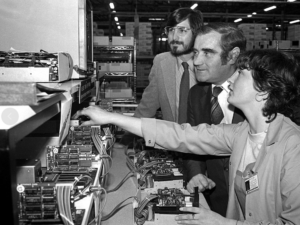Apple patent filing involves enhancing macOS’s Sidecar feature for the vision impaired — Apple World Today
[ad_1]
![]()
In the patent filing, Apple notes that vision problems can prevent many users from appreciating and using features available through touch-sensitive input devices that are also used to display affordances. For example, users of touch-sensitive secondary displays that may be located above a physical keyboard may not be able to view certain affordances because their fingers are occluding or covering up the affordances while they are displayed at a secondary display.
What’s more, text and images in such secondary displays are often small. These problems are particularly acute for low-vision users, who may have difficulties seeing certain affordances that are displayed at a secondary display, and these difficulties are worsened and amplified by the impaired vision.
Apple’s idea is for an iPad “Sidecar’d” to a Mac to seamlessly offer a zoomed-in display of the Mac’s screen in accessibility mode. The tablet’s screen would sport a user interface that includes: application-specific “affordances” (possible interactions with the iPad display) and a system-level affordance, where each application-specific affordance and the system-level affordance are displayed with a first display size.
Apple says that displaying a zoomed-in representation of at least one affordance of the application-specific affordance improves operability of the computing system, because low-vision users are able to interact with controls available at the touch-sensitive secondary display that may be too small (or may be occluded from view because a user’s finger is covering up the displayed controls) for the low-vision users to view accurately. In this way, low-vision users are able to take advantage of an improved man-machine interface by, e.g., having sustained interactions with a touch-sensitive secondary display (instead of having to constantly correct erroneous inputs).
[ad_2]
Source link




